Intro
Discover how Raynauds disease affects daily life, causing finger discoloration, pain, and numbness, with symptoms triggered by cold stress, emotional stress, and smoking, impacting overall well-being and requiring management through lifestyle changes and medical treatment.
Raynaud's disease, also known as Raynaud's phenomenon or Raynaud's syndrome, is a medical condition that affects blood flow to the fingers and toes, and sometimes the ears, nose, and lips. The condition is characterized by a sudden and temporary narrowing of the blood vessels in response to cold temperatures or stress, resulting in a range of symptoms. Raynaud's disease can have a significant impact on a person's quality of life, affecting not only their physical health but also their emotional and social well-being. In this article, we will explore the various ways in which Raynaud's disease can affect an individual, highlighting the importance of understanding and managing the condition.
Raynaud's disease is a relatively common condition, affecting up to 5% of the population. While it can occur in anyone, it is more common in women and individuals with a family history of the condition. The symptoms of Raynaud's disease can vary in severity and frequency, but they often include a sudden change in skin color, numbness or tingling, and pain or discomfort in the affected areas. These symptoms can be triggered by a range of factors, including cold temperatures, stress, and certain medications. Understanding the causes and symptoms of Raynaud's disease is essential for developing effective management strategies and improving quality of life.
The impact of Raynaud's disease can be far-reaching, affecting not only the individual with the condition but also their loved ones and daily activities. From simple tasks like dressing and grooming to more complex activities like work and socializing, Raynaud's disease can create significant challenges. Furthermore, the emotional and psychological effects of the condition should not be underestimated, as individuals with Raynaud's disease may experience anxiety, depression, and social isolation. By exploring the various ways in which Raynaud's disease can affect an individual, we can better understand the importance of seeking medical attention, developing coping strategies, and promoting awareness and support for those affected by the condition.
Understanding Raynaud's Disease
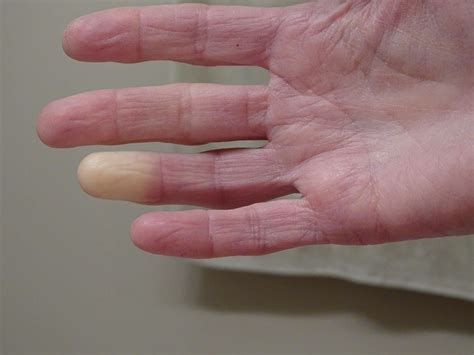
Types of Raynaud's Disease
There are two main types of Raynaud's disease: primary and secondary. Primary Raynaud's disease is the most common form of the condition and occurs without any underlying medical condition. Secondary Raynaud's disease, on the other hand, is associated with an underlying medical condition, such as lupus, rheumatoid arthritis, or scleroderma. The symptoms and treatment of primary and secondary Raynaud's disease can differ, highlighting the importance of accurate diagnosis and individualized care.Symptoms of Raynaud's Disease
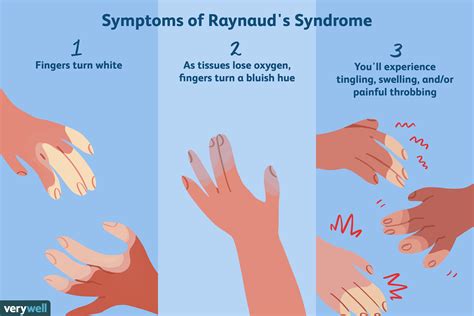
Triggers of Raynaud's Disease
A range of factors can trigger the symptoms of Raynaud's disease, including: * Cold temperatures * Stress and anxiety * Certain medications, such as beta-blockers and certain antidepressants * Smoking and nicotine * Caffeine and other stimulants * Hormonal changes, such as those experienced during pregnancy or menopause Being aware of these triggers can help individuals with Raynaud's disease to avoid or manage them, reducing the frequency and severity of symptoms.Diagnosing Raynaud's Disease
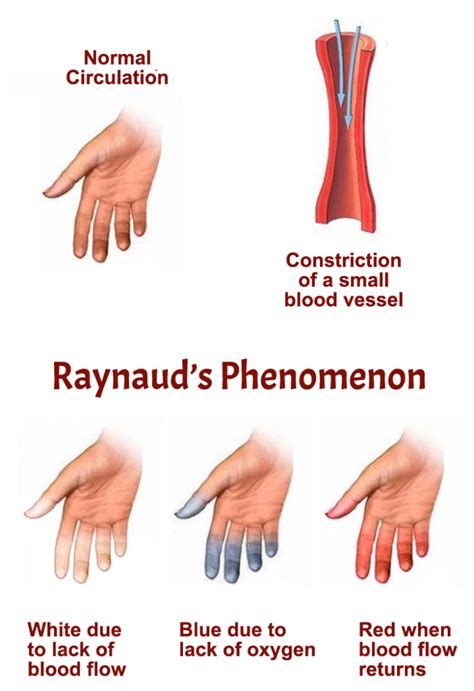
Diagnostic Tests for Raynaud's Disease
A range of diagnostic tests can be used to diagnose Raynaud's disease, including: * Blood tests to rule out underlying conditions, such as lupus or rheumatoid arthritis * Imaging studies, such as angiography or ultrasound, to assess blood flow and vessel function * Cold stimulation tests to assess the response of blood vessels to cold temperatures * Nailfold capillaroscopy to examine the small blood vessels in the nails These diagnostic tests can help healthcare providers to confirm the diagnosis and develop an effective treatment plan.Treatment and Management of Raynaud's Disease
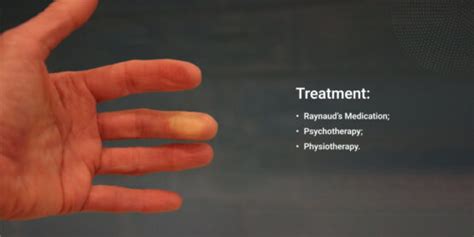
Lifestyle Modifications for Raynaud's Disease
A range of lifestyle modifications can help to manage Raynaud's disease, including: * Avoiding cold temperatures and dressing warmly in cold weather * Managing stress and anxiety through relaxation techniques, such as meditation and deep breathing * Quitting smoking and avoiding nicotine * Avoiding certain medications, such as beta-blockers and certain antidepressants * Exercising regularly to improve circulation and reduce stress These lifestyle modifications can help to reduce the frequency and severity of symptoms, improving quality of life and overall health.Complications of Raynaud's Disease
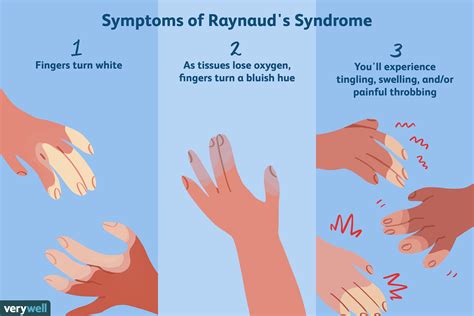
Preventing Complications of Raynaud's Disease
A range of strategies can help to prevent complications of Raynaud's disease, including: * Seeking medical attention promptly if symptoms worsen or persist * Developing a treatment plan with a healthcare provider * Practicing good wound care and infection prevention * Managing stress and anxiety through relaxation techniques * Staying active and mobile to improve circulation and reduce stiffness These strategies can help to reduce the risk of complications, improving quality of life and overall health.Living with Raynaud's Disease
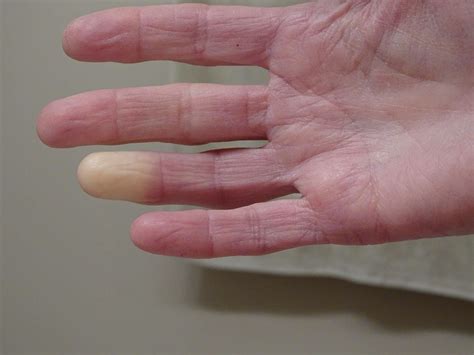
Coping with Raynaud's Disease
A range of coping strategies can help individuals with Raynaud's disease to manage the condition, including: * Practicing relaxation techniques, such as meditation and deep breathing * Staying active and mobile to improve circulation and reduce stiffness * Connecting with others who have the condition through support groups and online forums * Seeking emotional support from family and friends * Focusing on positive and achievable goals, such as improving mobility or reducing pain These coping strategies can help individuals with Raynaud's disease to manage the condition and improve quality of life.What is Raynaud's disease?
+Raynaud's disease is a medical condition that affects blood flow to the fingers and toes, and sometimes the ears, nose, and lips. The condition is characterized by a sudden and temporary narrowing of the blood vessels in response to cold temperatures or stress, resulting in a range of symptoms.
What are the symptoms of Raynaud's disease?
+The symptoms of Raynaud's disease can vary in severity and frequency, but they often include a sudden change in skin color, numbness or tingling, and pain or discomfort in the affected areas.
How is Raynaud's disease diagnosed?
+Diagnosing Raynaud's disease typically involves a combination of physical examination, medical history, and diagnostic tests. A healthcare provider may perform a physical examination to assess the affected areas and look for signs of reduced blood flow.
As we conclude our discussion on Raynaud's disease, it is essential to remember that the condition can have a significant impact on quality of life. By seeking medical attention, developing a treatment plan, and practicing lifestyle modifications, individuals with Raynaud's disease can reduce the frequency and severity of symptoms. We invite you to share your experiences and questions about Raynaud's disease in the comments below. Additionally, if you found this article informative, please share it with others who may be affected by the condition. Together, we can promote awareness and support for individuals with Raynaud's disease, improving their quality of life and overall health.
